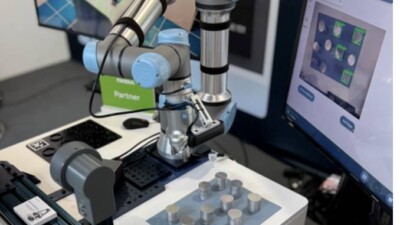A number of factors led to poor sales last year, but the latest report shows more companies in non-traditional robotics markets are turning to automation.
Robot sales in North America plummeted 30% in 2023 following record orders over the two previous years, according to the latest report from the Association for Advancing Automation (A3).
The report says companies purchased 31,159 robots in 2023, compared to 44,196 in 2022 and 39,708 in 2021.
The 2023 orders were divided almost equally among automotive (15,723) and non-automotive companies (15,436), representing a 34% drop in sales to automotive OEMs and suppliers and a 25% decrease in all other industries, compared to 2022.
A3 says the results point to a combination of factors, including a slower economy, higher interest rates and overstocking amid supply chain uncertainty. The association says better Q4 results indicate a potential turnaround in mid-2024.
“While robot sales naturally ebb and flow, the return to more typical robot sales after the last two record years can likely be attributed to a few obvious issues: a slow U.S. economy, higher interest rates and even the over purchasing of robots in 2022 from supply chain concerns,” said Jeff Burnstein, president of A3, in a release. “We’ve seen a slowdown in the manufacturing of electronic vehicles this year along with fewer new distribution centers, both likely reducing the demand for robots.”
In 2023, the strongest demand for robots from non-automotive companies came from the metal industry, followed by semiconductor & electronics/photonics; food & consumer goods; life sciences, pharmaceutical and biomedical, plastics & rubber, and others.
While each of these industries showed an overall decline compared to 2022, the last three months of the year saw higher sales in automotive (both OEM and components), metals, semiconductor & electronics/photonics, plastics & rubbers, metals and the All Other Industries category. This resulted in an increase of 20% over the third quarter of 2023).
This uptick, combined with strong results in the All Other Industries category—which covers sectors that are typically newer to robotics such as construction, hospitality and agriculture—could point to a stronger overall market in the second half of 2024.
“Both are promising signs that more industries are becoming increasingly comfortable with automation overall,” says Burnstein. “While we expect to see automotive orders rise again, there’s little doubt that orders will increase from all non-automotive industries as they recognize how robots can help them overcome their unique challenges.”



